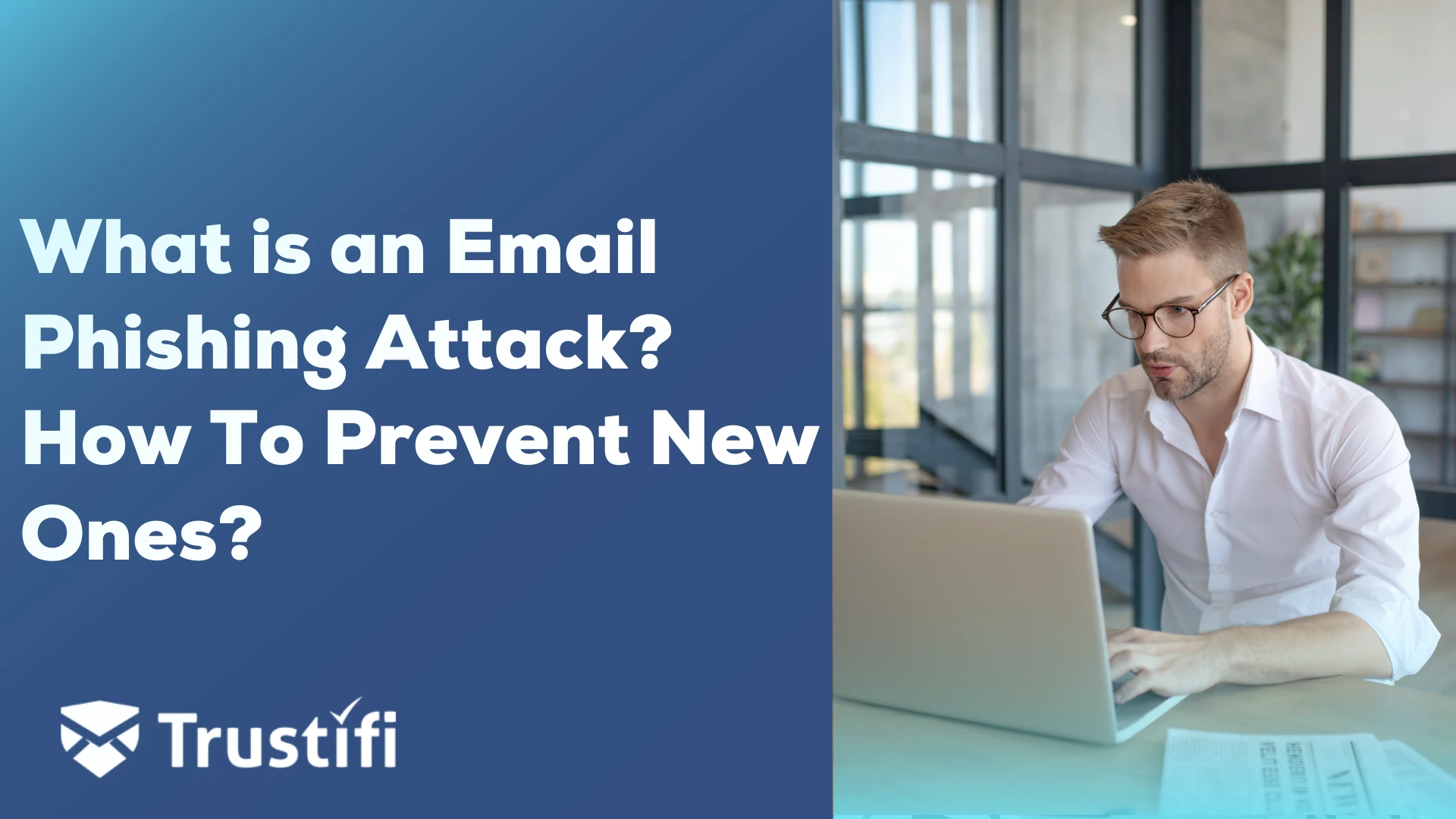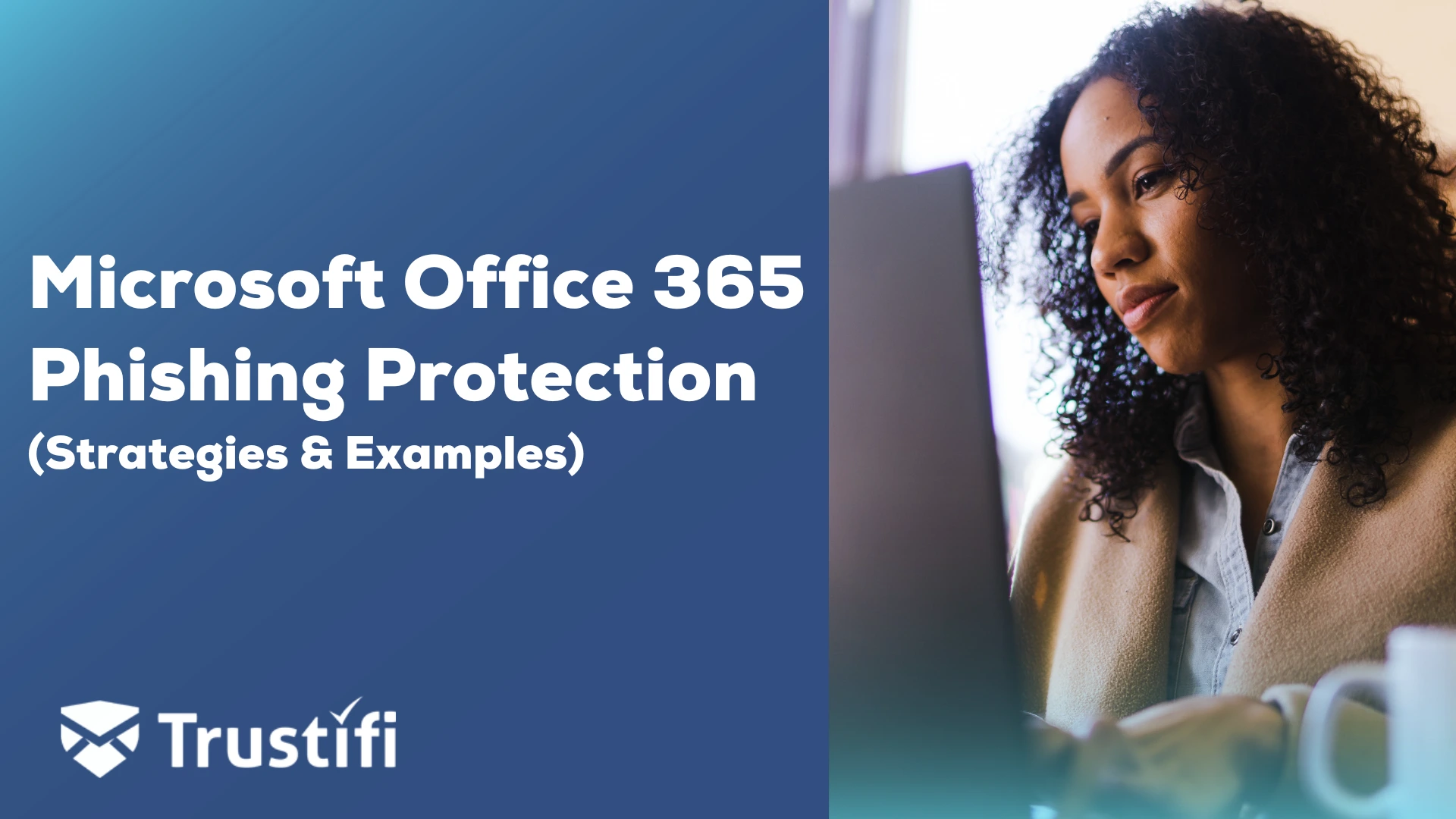Once hackers realize how lucrative email phishing has become, they focus on attack vectors, including financial fraud, business email compromise, and romance scams.
Trustifi, a global leader in email security powered by artificial intelligence(AI), continues to lead the market with innovative protection layers through a consolidated platform.
How Does Email Phishing Work?
91% of all cyber-attacks globally start with an email phishing attack. Phishing email attacks started like many cyber attacks, as a gag or a joke by amateur hackers.
These attacks range from a broad email phishing attack, spear phishing attack against a specific individual, or a whaling attack against a CEO or head of state.

Phishing scams start with a well-crafted email to a long list of potential victims claiming everything from “you won a million dollars” to someone claiming, “I love you.” These well-crafted emails attempt to fraud the victim by placing malicious links encouraging users to change their password and provide bank account information or their social security number.
Some of the top malicious link scams embedded within email phishing messages include:
- “I clicked on a fraudulent shipping link email.”
- “I clicked on a scam link posted within social media asking me for my bank details.”
- “I paid a fee to the agency receiving no services.”
- “I clicked on an SMS link on my mobile phone and realized it was a scam.”
Hackers, using AI-enabled tools like WormGPT and FraudGPT, continue to create near-perfect messages, including adding stolen content from users to make these suspicious emails even more believable.
What Are the Potential Risks?
In the fourth quarter of 2022, phishing attacks worldwide targeted financial institutions the most at 28%, followed by web-based software services and webmail at 18% and social media at 10%.
Successful phishing attacks deliver an emotional, financial, and psychological impact on their victims. People, including older adults, have lost their entire life savings and identity, driving down their credit scores.
Businesses suffering a business email compromise(BEC) attack lose millions of dollars yearly to email phishing attacks and domain impersonation attacks.
BEC phishing campaigns attack organizations’ financial systems and users attempting to fraud by sending fake invoices demanding immediate payment. These fraudulent emails trick the user into thinking the message and past-due invoice originate from one of their supply chain providers, a legitimate company they conduct business with, or a previous employee.
Organizations must invest in AI-enabled spam filters for all inbound email traffic to stop phishing and pharming attacks. Without the embedded AI, most email security solutions will not stop the next-generation email phishing attacks from WormGPT and FraudGPT hacker tools.
Artificial Intelligence vs Human Error in Preventing Phishing Attacks
The inception of AI within email security has become a necessity. Organizations fighting email phishing attacks with malicious payloads resulting in ransomware and other malware infections spend millions of dollars in cleanup costs and fines. Non-AI-powered email security solutions do not have the means to detect a complex email attack, including:
- Clone Phishing
- Angler Phishing
- Email Phishing Harvesting Login Credentials.
Security operations (SecOps) teams need AI to handle the processing of all incident response events through automation. Without AI and automation, SecOps will not keep up with the velocity of attack with human capital resources. The human engineering assets, partially due to the scale of attack velocity, will be prone to human error, including misconfiguration of security systems and wasting time with false positives.
The Limitations of AI in Detecting Phishing Attacks.
AI for email security has proven effective in stopping many attacks. With AI-enabled capability platforms, security teams continue to replace existing adaptive controls, including data loss prevention, email encryption, and account takeover solutions.
AI is a solution that gets better. However, this innovative technology requires continuous data processing through the Large Language Model(LLM) to create new datasets. These datasets contain the needed trending data analytics for AI to stay current with the latest attack behaviors. The cost to process data within cloud-based LLM is still quite expensive. Organizations leveraging Snowflake, Databricks, and other cloud-based AI analytics tools will benefit from these solutions to help lower data processing costs.
However, without the ability to capture security telemetry data in real-time and feed it into LLMs, these AI tools, in time, will become ineffective against hackers using similar capabilities. Hackers, similar to SecOps teams, also struggle to capture their attack telemetry data to feed into their LLMs, which assist them in adjusting their attack vectors and velocity. Using WormGPT and FraudGPT, hackers can rapidly spin up new malicious and phishing websites based on results from the LLM dataset processing. Using AI, hackers can quickly adjust their type of scam links to new fraudulent websites while increasing the success rate of their cyber crimes.
How Can AI Keep Us Safe from Phishing Attempts?
Keeping safe from AI-enabled email phishing attacks starts with organizations assessing their current email protection strategy. The organization should consider what attack vectors and surfaces are vulnerable within their environment.
- How much do social engineering techniques affect the users?
- How many emails become stopped at the secure gateway containing malicious attachments?
- Is the chief executive the most targeted user person in the organization?
- Is credential theft and SMS phishing a problem?
By investing in AI security solutions, the organization will best prepare suspicious messages embedded within next-generation email security attacks. Without AI-enabled solutions, complex and well-crafted email phishing messages will bypass legacy email security and effect unsuspecting victims.
Enable Next-Generation Email Security to Prevent Email Phishing Scams.
Organizations dealing with increased email phishing attacks across all communication channels from bad actors realize the need to upgrade their email security strategy, including enabling a more aggressive protective layer powered by AI.
Organizations reevaluating their email security strategy by considering migrating from the legacy secure email gateway (SEG) devices need to consider a cloud-based artificial intelligence(AI) powered platform that provides exceptional protection.
Trustifi’s proven success within its AI-enabled security platform stops several email phishing attacks. Their proven strategy with a variety of scanning options powered by AI and their consolidated multi-layer security offering delivers AI-protected inbound filtering, outbound data loss prevention, integrated email encryption, account takeover prevention, and support multi-factor authentication within a single management console continues to be very appealing to many SMB and mid-enterprise customers.
Why Trustifi?
Trustifi offers a consolidated solution pricing to support small and midsize enterprise marketplaces. Trustifi requires fewer security operations, time allocation, and management resources.
Trustifi’s agile platform offers several additional protections to help prevent the following attacks:
-
Next-Gen Phishing: Trustifi uses AI, feeds, and proprietary metrics to detect and quarantine malicious emails, URLs, and files that aim to steal the recipient’s data
-
Credentials Theft – Account Takeover: Trustifi has unique metrics to detect malicious emails even though they come from a known contact and allows listed senders.
Comprehensive Reporting module easily customized to meet your organization’s reporting mandates.



